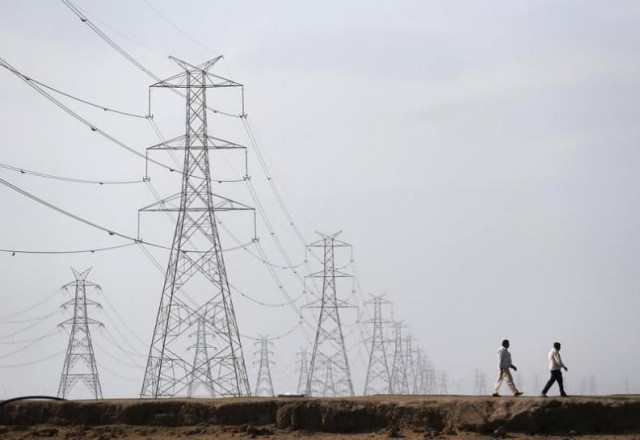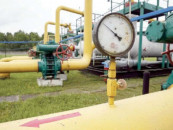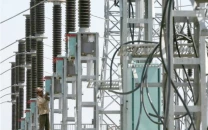Govt eases cost criterion for electricity supply schemes
Move comes in the wake of execution of several CPEC energy projects

Men walk past electric pylons. PHOTO: REUTERS
With gradual increase in power production, Prime Minister Shahid Khaqan Abbasi has already announced that electricity load-shedding will come to an end in the current fiscal year as many power plants are heading towards completion.
According to sources, a steering committee tasked with implementing different schemes under the SDGs recommended amendments to the approved guidelines. It suggested that the minimum cost for electricity supply schemes should be Rs100,000 instead of Rs500,000.
Pakistan, China revise ‘priority list’ of CPEC energy projects
Responding to the proposal, the government removed the bar on the minimum cost.
The committee also sought powers to recommend utilisation of savings out of the SDG schemes.
Under the original guidelines for implementation of the SDG programme, the government had said the electricity supply schemes costing a minimum of Rs500,000 and a maximum of Rs30 million would be entertained.
The guidelines also said savings should be surrendered immediately after the completion of schemes without waiting for the close of a financial year. No new schemes will be entertained against savings of the originally funded schemes.
The cabinet had approved the guidelines for the “Prime Minister’s Global Sustainable Development Goals Achievement Programme” on September 30, 2016.
Earlier, it gave the go-ahead for the execution of the programme on August 31, 2016.
However, the federal government’s development package called “Wazeer-e-Azam Qaumi Taraqiati Programme 2016-18” did not win support of Sindh and Khyber-Pakhtunkhwa provinces, run by two major opposition parties, who termed it a political move.
According to officials, Sindh and Khyber-Pakhtunkhwa believed that the package was part of an election campaign aimed at winning over a large number of voters.
Under the package, the federal government eased the criterion for providing electricity to the villages.
Energy projects worth $25b to be completed under CPEC: Ahsan Iqbal
The provincial governments had been invited to join the development programme and share their resources in order to achieve the sustainable development agenda.
The central government wanted provinces to equally provide funds for the schemes under the package such as electricity, gas, natural resources and social sector projects.
It was of the view that the development package would not bear fruit without involvement and support of the provinces. Provincial departments may not fully cooperate in executing the schemes in the absence of active involvement of the provinces, it said.
Under the plan, the provinces were supposed to bear recurring expenses of different schemes. Many of the proposed infrastructure projects were within the provincial domain and it was appropriate to launch them in consultation with the provinces.
Published in The Express Tribune, September 22nd, 2017.
Like Business on Facebook, follow @TribuneBiz on Twitter to stay informed and join in the conversation.



















COMMENTS
Comments are moderated and generally will be posted if they are on-topic and not abusive.
For more information, please see our Comments FAQ